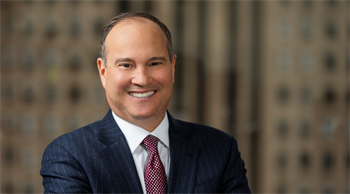A BRIGHT FUTURE FOR CHICAGO
ComEd PLN Network
Published: June 11, 2019
4 takeaways from the new mayor’s energy and environment transition committee
A guest post by: Joe Dominguez, CEO of ComEd and co-chair of the mayor’s environment transition committee
(Article from ComEd PLN Network)

Joe Dominguez, CEO of ComEd
May 13 marked a new day for Chicago as Mayor Lori Lightfoot took the helm of America’s third-largest city. On day one, the new mayor unveiled plans to respond to the climate crisis by reducing air pollution from the electric and transportation sectors, making infrastructure more resilient to increasingly volatile weather, and creating jobs and economic opportunities for all communities. These plans were developed by her administration’s environment transition committee, a group of 35 organizations, including ComEd, that worked together over five weeks to develop new approaches to Chicago’s energy and environmental priorities.
ComEd powers the lives of 2.7 million Chicagoans and will be a key partner in implementing Mayor Lightfoot’s vision for the city, including:
- Electrification of public transportation. The electric vehicle(EV) revolution is rapidly accelerating as automakers shift investment to meet growing market demand for EVs and reduce air pollution. Just as quickly, trains, buses and other forms of mass transit also are moving to battery electric vehicles. While weaning vehicles off of fossil fuels will help reduce smog and address the climate crisis, it will create new requirements for our grid to add charging infrastructure, serve additional electric demand and achieve ever-higher levels of reliability. At ComEd, our smart grid investments already are delivering a 60 percent improvement in reliability and we are far from done. As one example, we are partnering with the city, Center for Sustainable Energy and the Department of Energy to support installation of charging stations for multiunit and curbside residential charging in the city’s Bronzeville neighborhood.
- Chicago commits to 100 percent clean energy by 2035. Chicago recently became the largest U.S. city to commit to 100 percent clean energy, setting a goal of 2035. At ComEd we know that a clean energy future starts with becoming more efficient in how we use our resources. So ComEd is expanding programs that have helped residents, businesses and communities save $4 billionby using energy more efficiently. To encourage renewable energy, we’re also providing incentives for businesses, schools and other organizations and tools to help consumers install and use solar energy. As the solar revolution takes off, many of our customers will become “prosumers” – energy producers during certain hours of the day and energy consumers during others. The next phase of ComEd’s smart grid strategy is aimed at creating two-way power flow capability so that our grid will interconnect and move around energy in ways that we never previously imagined.
- Chicago will focus on building infrastructure resilience, in every sense of the word. The days ahead will require us to do two things simultaneously: 1) mitigate carbon emissions through increased renewable energy and electrification of transportation and other sectors and2) adapt to climate challenges by fortifying our infrastructure to withstand extreme weather events that climate scientists at the National Oceanic and Atmospheric Administration say are inevitable. The climate crisis will continue to challenge the Chicago region with severe weather ranging from polar vortex events in the winter where temperatures could reach negative 30 degrees to a projected 1,000 percent increase in summer days that reach 96 degrees or more. We estimate that these changes alone will increase electric demand by 30 percent by 2050 without accounting for new demand from electrification of transportation. Increased temperature volatility also increases the intensity of storms and flooding. So, while we focus on the next phase of building out the smart grid, we cannot lose sight of our bread and butter work to make our grid more resilient to protect the families and businesses that count on us.
- Creating new green jobs resilience. Chicago’s transition to clean and resilient energy is also an opportunity to grow and strengthen local jobs that our city can’t afford to miss. New census figures show that the city’s population fell for a fourth year in a row in 2018, with job opportunity playing a role. Fortunately, Chicago will need a new green workforce: skilled people to build clean energy, retrofit facilities and provide related services. This includes positions at ComEd – working to modernize the grid and make infrastructure more resilient – that the new administration has recognized as green jobs. Meeting these demands will also require new perspectives. That means creating employment opportunities for underserved communities, and not just the few. It starts with exposing young people to the possibilities in STEM. We also need to provide development opportunities for residents, giving them the tools to compete for those roles. ComEd’s investments under Illinois’ Future Energy Jobs Act, for example, are connecting adults – including alumni of the foster care system and returning citizens – with training to become work-ready.
Chicago will lead the nation into the clean and resilient energy future we all want and ComEd will be a key partner. We have been powering lives for over 100 years, but we are just getting started.